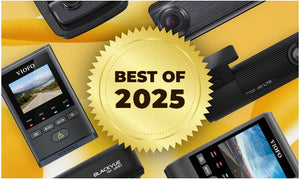Finally, the camera behind the speed tickets drivers hate. Speed cameras work in many of the same ways that red light cameras work, but instead of monitoring the red light violations, they monitor and enforce speed. They are often placed in less populated areas such as back roads or residential areas. Similar to ANPR, speed cameras can also be fixed or mobile.
Fixed Speed Cameras
Fixed speed cameras are the easiest to spot, since they are almost always mounted on elevated poles on the side of the road. These cameras are easy to find due to their bulky weatherproof enclosures and external flashes, often mounted on a separate pole.
Mobile Speed Cameras
Mobile speed cameras are more difficult to detect. These cameras are not fixed to the ground and can be found on a camera tripod, held by an officer, or inside a vehicle. Because mobile speed cameras are frequently repositioned, crowdsourcing programs embedded into most radar detectors have difficulty being used to reliably locate them.
Mobile speed cameras are also distinguished by the use of a form of radar that is difficult for most radar detectors to detect: low-powered K-band and MRCD (or Multaradar). In fact, the majority of radar detectors on the market are incapable of detecting these dangers efficiently. Long-distance detection of MRCD and low-powered K band requires a radar detector with a particular hardware circuit designed specifically for this purpose.
The mobile speed camera space is continually being updated, as different law enforcement and government organizations receive new equipment. Those interested in blocking and jamming such connections may find themselves in a battle of upgrading equipment, as each side continues to upgrade and modernize their equipment.

